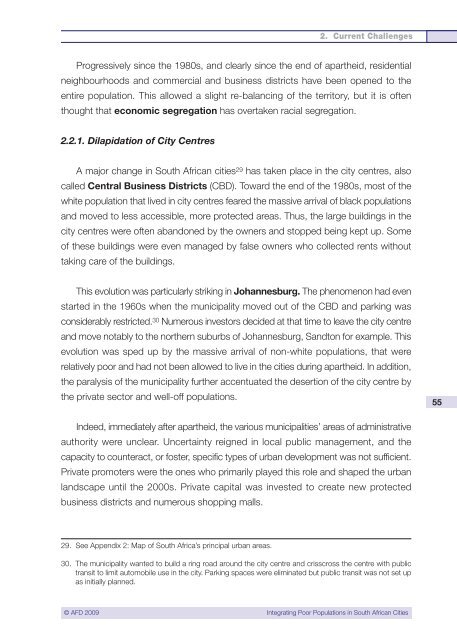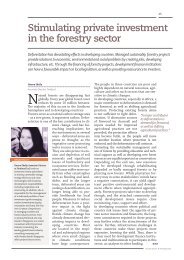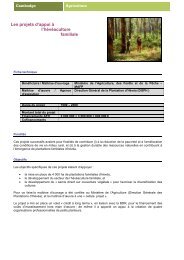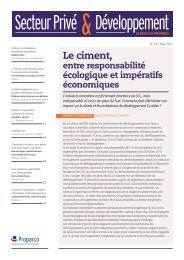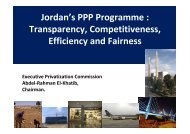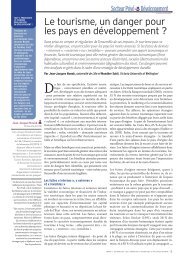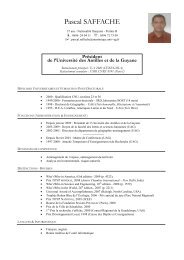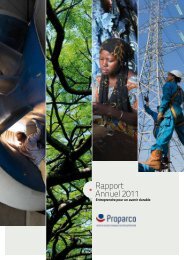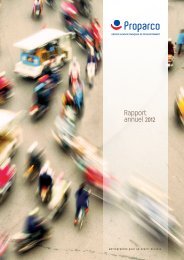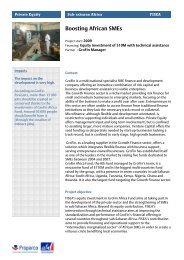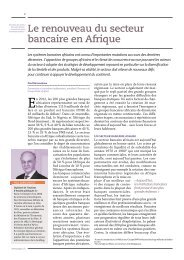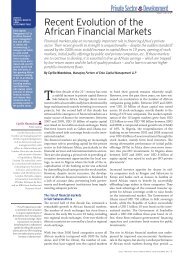Integrating Poor Populations in South African Cities - Agence ...
Integrating Poor Populations in South African Cities - Agence ...
Integrating Poor Populations in South African Cities - Agence ...
Create successful ePaper yourself
Turn your PDF publications into a flip-book with our unique Google optimized e-Paper software.
2. Current Challenges<br />
Progressively s<strong>in</strong>ce the 1980s, and clearly s<strong>in</strong>ce the end of apartheid, residential<br />
neighbourhoods and commercial and bus<strong>in</strong>ess districts have been opened to the<br />
entire population. This allowed a slight re-balanc<strong>in</strong>g of the territory, but it is often<br />
thought that economic segregation has overtaken racial segregation.<br />
2.2.1. Dilapidation of City Centres<br />
A major change <strong>in</strong> <strong>South</strong> <strong>African</strong> cities 29 has taken place <strong>in</strong> the city centres, also<br />
called Central Bus<strong>in</strong>ess Districts (CBD). Toward the end of the 1980s, most of the<br />
white population that lived <strong>in</strong> city centres feared the massive arrival of black populations<br />
and moved to less accessible, more protected areas. Thus, the large build<strong>in</strong>gs <strong>in</strong> the<br />
city centres were often abandoned by the owners and stopped be<strong>in</strong>g kept up. Some<br />
of these build<strong>in</strong>gs were even managed by false owners who collected rents without<br />
tak<strong>in</strong>g care of the build<strong>in</strong>gs.<br />
This evolution was particularly strik<strong>in</strong>g <strong>in</strong> Johannesburg. The phenomenon had even<br />
started <strong>in</strong> the 1960s when the municipality moved out of the CBD and park<strong>in</strong>g was<br />
considerably restricted. 30 Numerous <strong>in</strong>vestors decided at that time to leave the city centre<br />
and move notably to the northern suburbs of Johannesburg, Sandton for example. This<br />
evolution was sped up by the massive arrival of non-white populations, that were<br />
relatively poor and had not been allowed to live <strong>in</strong> the cities dur<strong>in</strong>g apartheid. In addition,<br />
the paralysis of the municipality further accentuated the desertion of the city centre by<br />
the private sector and well-off populations.<br />
55<br />
Indeed, immediately after apartheid, the various municipalities’ areas of adm<strong>in</strong>istrative<br />
authority were unclear. Uncerta<strong>in</strong>ty reigned <strong>in</strong> local public management, and the<br />
capacity to counteract, or foster, specific types of urban development was not sufficient.<br />
Private promoters were the ones who primarily played this role and shaped the urban<br />
landscape until the 2000s. Private capital was <strong>in</strong>vested to create new protected<br />
bus<strong>in</strong>ess districts and numerous shopp<strong>in</strong>g malls.<br />
29. See Appendix 2: Map of <strong>South</strong> Africa’s pr<strong>in</strong>cipal urban areas.<br />
30. The municipality wanted to build a r<strong>in</strong>g road around the city centre and crisscross the centre with public<br />
transit to limit automobile use <strong>in</strong> the city. Park<strong>in</strong>g spaces were elim<strong>in</strong>ated but public transit was not set up<br />
as <strong>in</strong>itially planned.<br />
© AFD 2009 <strong>Integrat<strong>in</strong>g</strong> <strong>Poor</strong> <strong>Populations</strong> <strong>in</strong> <strong>South</strong> <strong>African</strong> <strong>Cities</strong>


